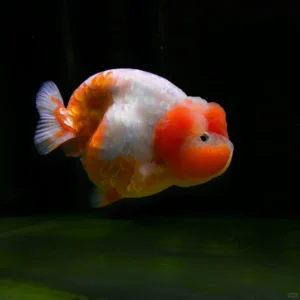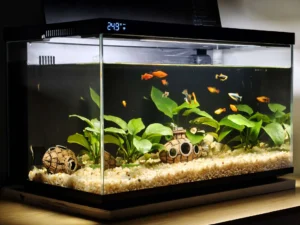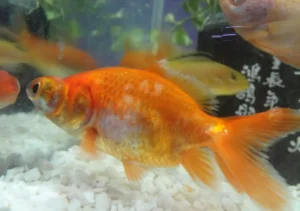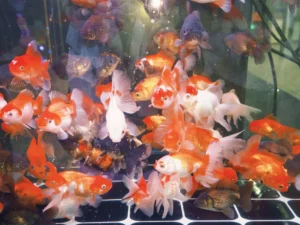Green algae are a common issue faced by many aquarium enthusiasts. Not only do they affect the aesthetic appeal of your tank, but they can also threaten the health of aquatic life. To effectively eliminate green algae, it’s essential to understand their causes and take comprehensive preventive measures. Below are ten scientific and practical methods to help you restore your aquarium’s clarity and balance.

1. Control Lighting Duration
Green algae rely on photosynthesis, and light is the key factor that drives it. When a fish tank is exposed to strong light for extended periods—especially direct sunlight—algae growth accelerates. Controlling light exposure is therefore the first step in preventing algae blooms.
- Reduce lighting time: Keep the lights on for 6–8 hours per day, and avoid exceeding 10 hours. A timer can help automatically control lighting schedules.
- Avoid direct sunlight: Place your tank away from windows or use curtains to block natural sunlight.
- Choose proper lighting: LED lights are better for plant growth and less likely to promote algae than traditional fluorescent lamps.
2. Adjust Feeding Amount
Excess fish food and waste decompose into nitrates and phosphates, which are the main nutrients for algae. Controlling feeding is a simple but effective way to limit algae growth.
- Feed moderately: Offer only as much food as your fish can consume in 2–3 minutes.
- Remove leftovers: Use a gravel vacuum or net to clean uneaten food and waste regularly, preventing organic buildup.
3. Perform Regular Water Changes
Changing water helps dilute nutrients that fuel algae growth. Ideally, replace 20%–30% of the tank water weekly, adjusting the frequency based on tank size and bioload.
- Use conditioned water: Let tap water sit for 24 hours or use a water conditioner to remove chlorine.
- Avoid excessive changes: Replacing more than 50% of the water at once can stress fish and plants—make gradual changes instead.

4. Introduce Plant Competitors
Aquatic plants compete with algae for nutrients. Fast-growing plants can effectively suppress algae by absorbing nitrates and phosphates.
- Choose fast-growing species: Examples include hornwort, anubias, and java moss.
- Add floating plants: Duckweed can block light and absorb excess nutrients—but monitor growth to prevent over-spreading.
5. Use Algae-Eating Creatures
Certain aquatic species feed on algae, helping to keep your tank clean naturally.
- Good algae eaters: Otocinclus catfish, Amano shrimp, and snails (such as apple snails or zebra snails) are excellent options.
- Check compatibility: Ensure new additions can coexist peacefully with your existing fish.
6. Apply Algae Control Chemicals
If algae problems become severe, you may consider chemical treatments—but use them cautiously to avoid harming fish or plants.
- Choose safe products: Prefer natural-based algaecides containing glutaraldehyde, and avoid copper-based formulas, which are toxic to invertebrates.
- Follow instructions carefully: Overuse can poison fish or damage plants.
7. Remove Algae Physically
For visible algae buildup, manual cleaning remains the most straightforward method.
- Use an algae scraper: Clean tank walls regularly, paying attention to corners and edges.
- Wipe decor and plants: Gently clean algae from decorations and plant leaves with fine filter pads.
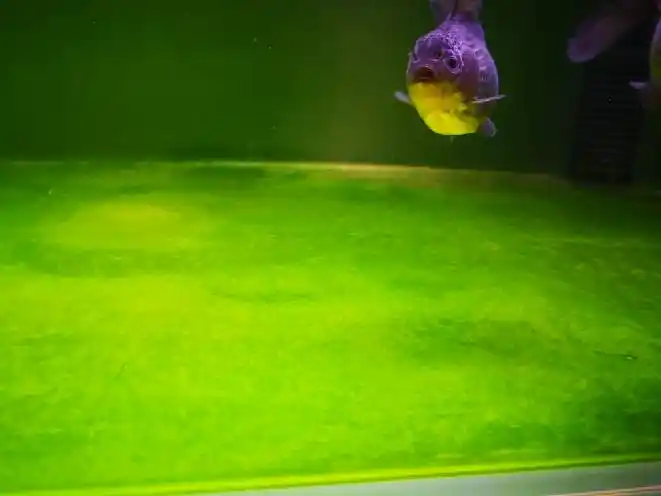
8. Optimize the Filtration System
A strong filtration system helps eliminate organic matter and suspended algae particles from the water.
- Use suitable filter media: Combine sponge, activated carbon, and ceramic rings for best results.
- Clean filters regularly: Rinse filter media with tank water once or twice a month to prevent clogging and maintain beneficial bacteria.
9. Monitor Water Parameters
Algae blooms are often linked to poor water quality. Regularly testing key water parameters helps prevent outbreaks.
- Nitrates and phosphates: Keep nitrate levels below 20 ppm and phosphates under 1 ppm.
- pH and hardness: Maintain a pH between 6.5–7.5, adjusting hardness based on your fish species.
10. Maintain Long-Term Balance
Creating a stable aquarium ecosystem is the ultimate defense against algae.
- Establish ecological balance: Keep a healthy ratio of fish, plants, and microorganisms.
- Observe and adjust: Monitor tank conditions regularly and adjust lighting, feeding, and water changes as needed.
Conclusion
Eliminating green algae is not an overnight task—it requires consistent care and proper aquarium management. By combining light control, water quality maintenance, biological balance, and physical cleaning, you can effectively suppress algae growth and maintain a clear, vibrant aquarium.
Remember: prevention is better than cure. Consistent maintenance and attention to detail are the real secrets to a healthy, algae-free fish tank.

